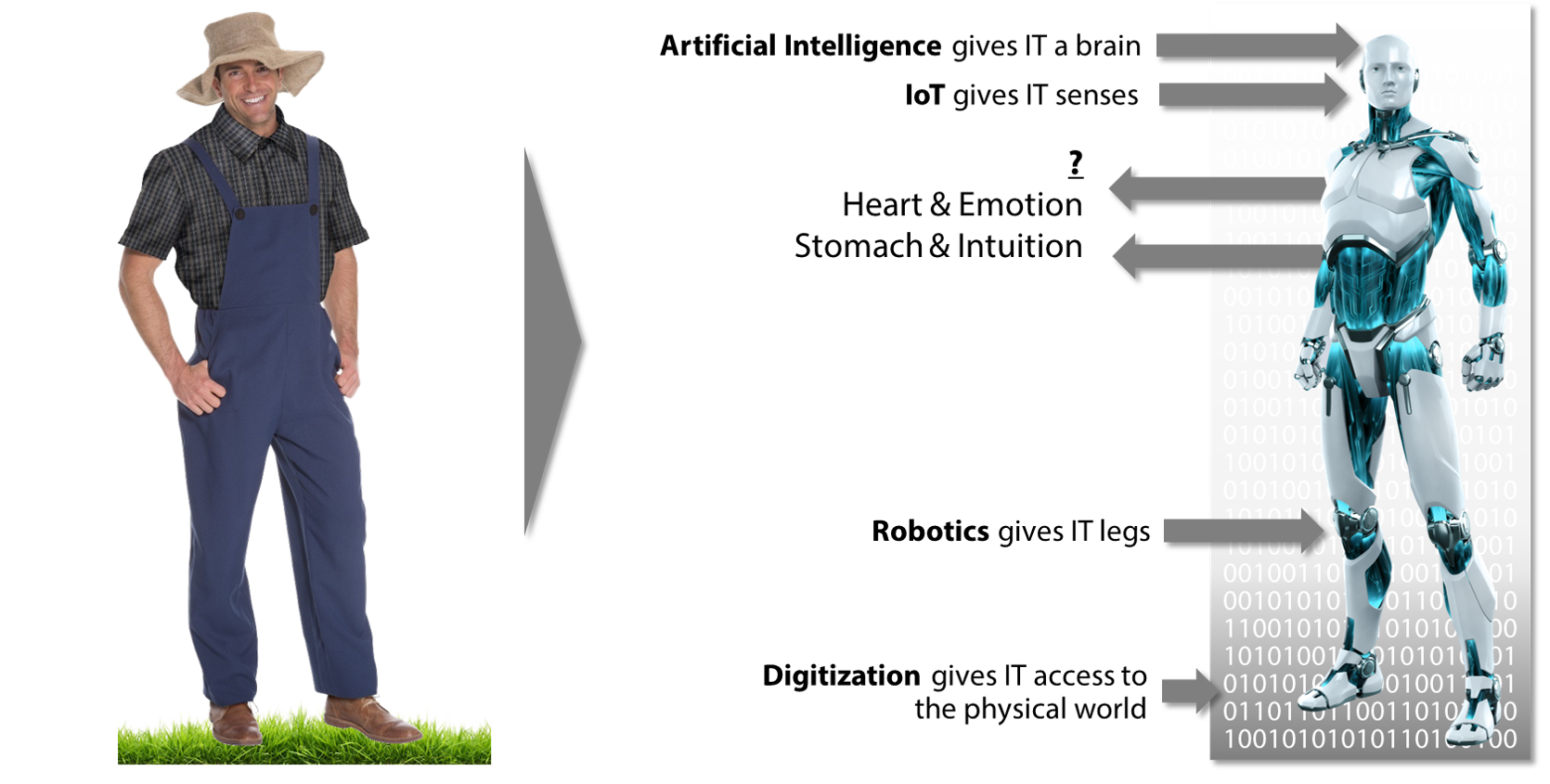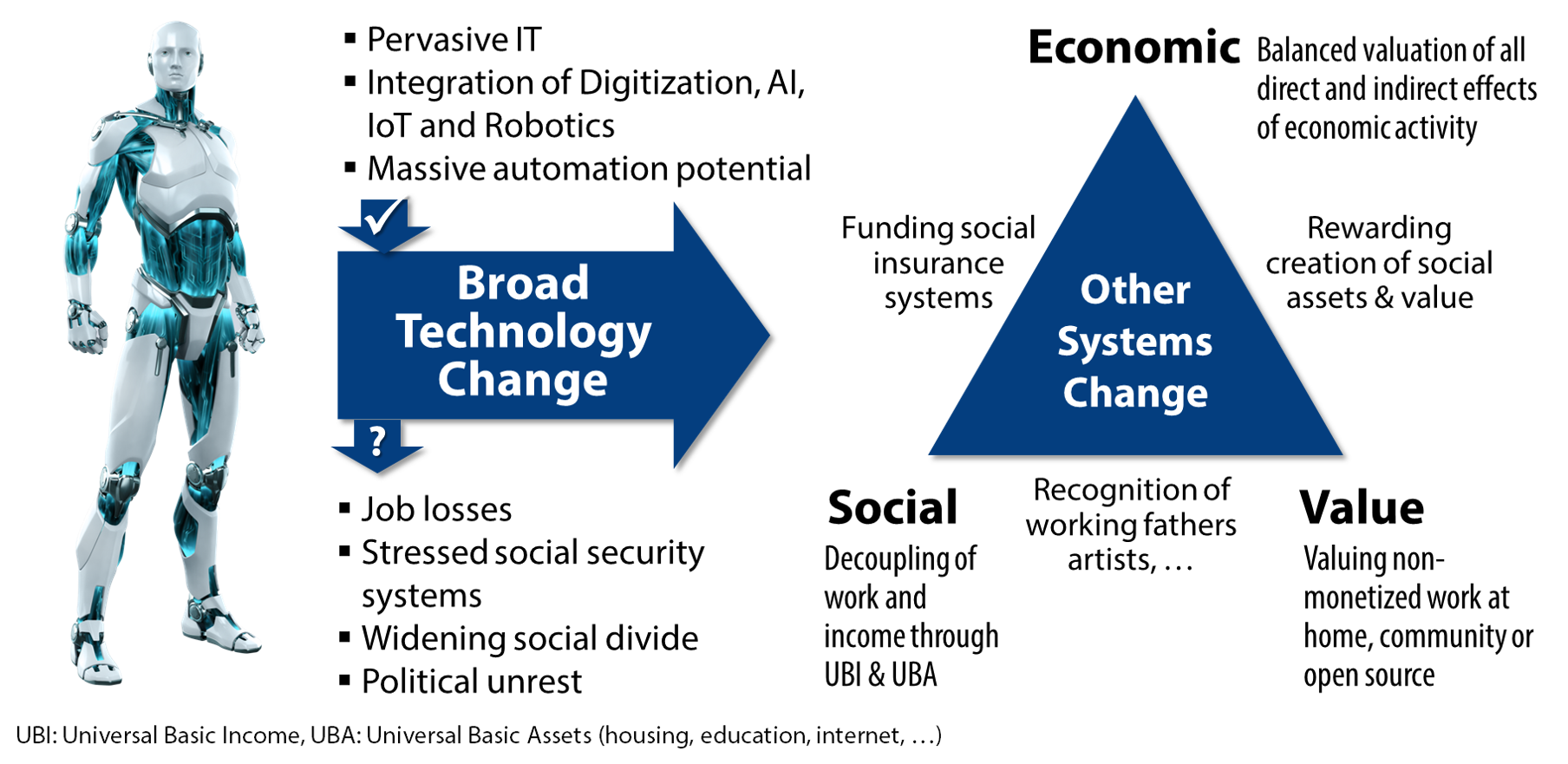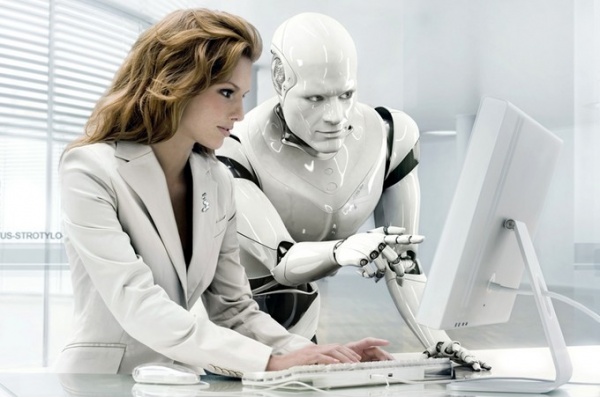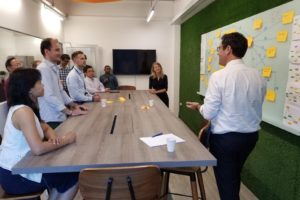The long-term effects of the Covid-19 crisis are still mainly in the dark, but it is already clear that our experiences with remote work will shape the future of work going forward. Our increased use of technology already leads to cleaner air and lower CO2 emissions, improves work-life balances, and increases collaboration.
Technology has always paved the way for a better future. We created it to benefit us. But its use requires cautious decisions that balance the positive and negative aspects of it. Some technologies have clear dual uses like drones, nuclear power and AI and need to be controlled.

Technology also requires careful consideration of its application. As we enter the integration phase of the third industrial revolution the use of IT becomes pervasive. AI gives IT a brain, IoT gives it senses, robotics legs and digitization the ability to access, understand and manipulate the physical world.
These technologies are driven by ever-increasing computing power, miniaturization, and mountains of data. Most importantly: they are multiplicative. For example, having senses provides data for you to make better decisions that allow you to take more effective actions automatically.

We are only starting to understand the potential of those technologies and their combinations. The most significant potential is automation.
Starting in 2013, studies tried to estimate the impact of this massive automation potential. Averages were around 50% of all jobs being at risk in 10-20 years. Since then, two important realizations have mellowed things down a bit.
Firstly, we realized that the automation potential relates more to individual skills and tasks not entire jobs. Tasks like understanding text or driving a car. Automation of tasks will affect and change most if not all jobs, but it may not make them obsolete.
Secondly, new jobs will be created , for example, in the space between humans and technology. Jobs that support, and maintain technology and manage the increasingly complex human-machine relationship.
Overall, the current estimates are even predicting that more jobs will be created than destroyed going forward.
The transition from the current to the new world of work will not be without challenges. Throughout all industrial revolutions, entry-level workers had to skill-up but were always able to find work after all. Low-level jobs moved from fields to factories and eventually to services. Now, machines take some of those jobs. Self-service, autonomous vehicles, and intelligent chatbots are only hinting at what may be possible in the future.
We need to work together to ensure that we are always staying on the positive side of technology and mitigate the unavoidable hardships that will occur during a transition that may take decades to complete.
Governments will have to provide forward-looking policies that shape our economic, social, and value systems while providing support and incentives to soften adverse effects and pace the transition.

Businesses will have to adopt a broader stakeholder view that includes shareholders, employees, communities, and the planet in decisions to deploy and equitably distribute the benefits of technology.
Individuals will have to continually challenge their thinking and embrace life-long learning to stay relevant.
Those willing to make these shifts and enable the new world of work will benefit from the vast potential for innovation, development and wealth it offers.
Digitalization is now a must. The platform, sharing, gig, and other economies provide a robust foundation that you can only participate in with digital mastery. They are global, operate on data and rely on fast and flexible transactions powered by standards and APIs.
Those economies only provide value when used. Their most important use is to enable ecosystems.
Ecosystems flexibly combine capabilities, resources, products, and services to serve existing or new customers better through cooperation and collaboration. Often, they are initiated by a single company like Apple or Google. Other companies choose to join and may play in several, potentially competing ecosystem in parallel. Examples for ecosystems include initiatives to build smart cities and mobility.
Ecosystems are the next step in the evolution of our economies. In the past, individuals networked to form companies. Now, companies network to form ecosystems.
Ecosystems blur industry delineations. The recent consolidation of Singapore’s 23 industry transformation maps into six sector clusters recognizes this.
Ecosystems and automation are two significant trends to follow to understand the future of work. They work well together.
For companies, automation enables real-time capabilities to empower fast and flexible transactions in ecosystems devised as loose networks rather than rigid supply chains.
For humans, ecosystems provide a new space for humans for what they do best: envision, collaborate, and create. Focusing human activity on collaboration keeps us at a safe distance from automation.
Traditional, top-down, role- and process-obsessed, siloed organizations are not built for bringing out the best of humans. For example, individual performance assessments and incentives tend to put people against each other rather than furthering collaboration.
But change is on the way. According the 14th Annual State Of Agile Report 95% of companies are already adopting agile ways of working to create teams that collaborate better.
The agile movement is coming at the right time. It enables continuous learning and adaptation to our ever faster changing environments. Only humans learn. Machines cannot. If we focus our human activities there, automation will not threaten us.
We can fully embrace technology while we shift our focus to collaborating internally and externally to build new ecosystems. In such a future of work, humans will stay relevant for a long time. Machines don’t collaborate well.
Humans will also be needed to shape the increasingly complex human-machine relationship. Traditionally, humans operate machines as extensions to our arms, legs and brains.
Autonomous machines make the human-machine relationship more complex: Machines will support us, we will support machines, and collaborate with them using new interfaces. In a dystopian future, machines and humans may even collide. But this does not need to happen if we stay on top of the development. Human-machine interaction will be a fertile field for innovation and growth.
The future of work is shaped by technology that drives automation and the formation of new ecosystems. All this is happening at the backdrop and an increasingly VUCA world.
We need to stay on the positive side of this development, with thought-leadership, innovation. Be guided by strong values, purpose, and wise, public governance.
If we are successful, we will bring the best of machines and humans to bear for the benefit of all of society, humanity and the planet.



